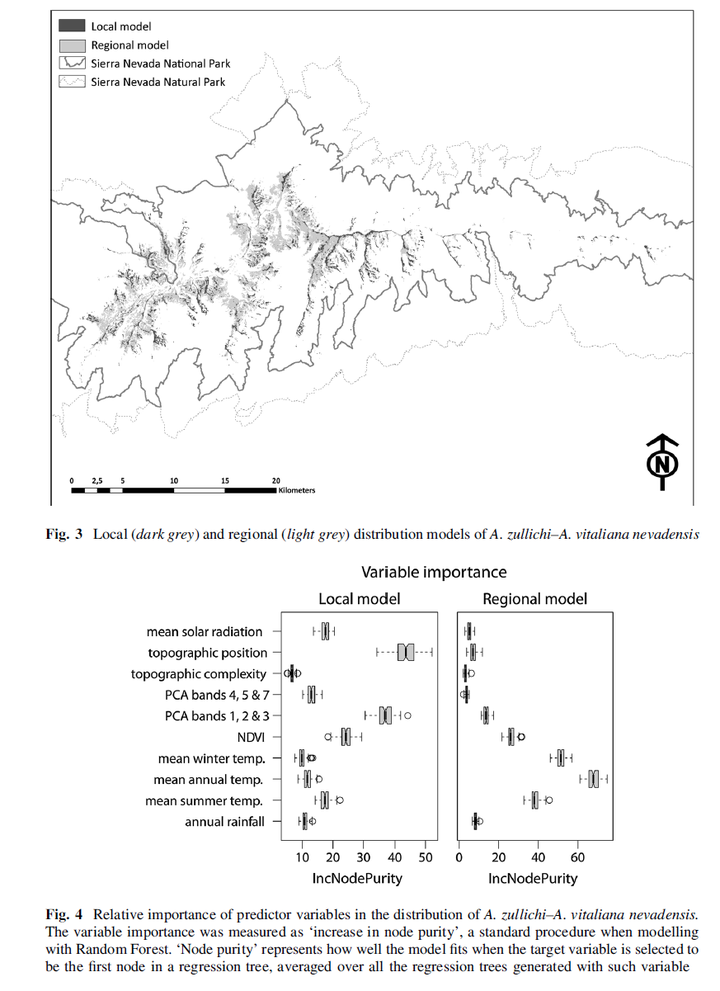Distribution and conservation of the relict interaction between the butterfly Agriades zullichi and its larval foodplant (Androsace vitaliana nevadensis)
 Image credit: Blas M. Benito
Image credit: Blas M. Benito
Abstract
Although Mediterranean mountains are considered biodiversity hot-spots, the presence of relict biotic interactions as a testimony of a past colder climate is an aspect frequently missed. Herein we investigate the distribution and conservation problems of a relict interaction in the Sierra Nevada mountains (southern Europe) between the butterfly Agriades zullichi —a rare and threatened butterfly— and its larval foodplant Androsace vitaliana subsp. nevadensis. We designed an intensive field survey to obtain a comprehensive presence dataset. This was used to calibrate species distribution models with absences taken at local and regional extents, analyze the potential distribution, evaluate the influence of environmental factors in different geographical contexts, and evaluate conservation threats for both organisms. We found 39 presence localities inhabited by the larval foodplant and the butterfly comprising 60.93 ha, with 82 % of the area concentrated in ten larger localities. The local and regional distribution models explained 68.7 and 85.0 % deviance, indicating a suitable area of 1,884.8 and 9,621.22 ha respectively. Topography and soil properties were the most important variables in the local model and temperature in the regional model. We observed several threats such as restricted extent of occurrence, lack of larval foodplant regeneration, the negative effect of the ski resort and a potential high sensitivity to climate change. Finally, we recommend some management measures in order to improve the conservation of key populations of both species, reinforcing A. vitaliana nevadensis populations and researching the importance of phenology in the persistence of this interaction under climate change.